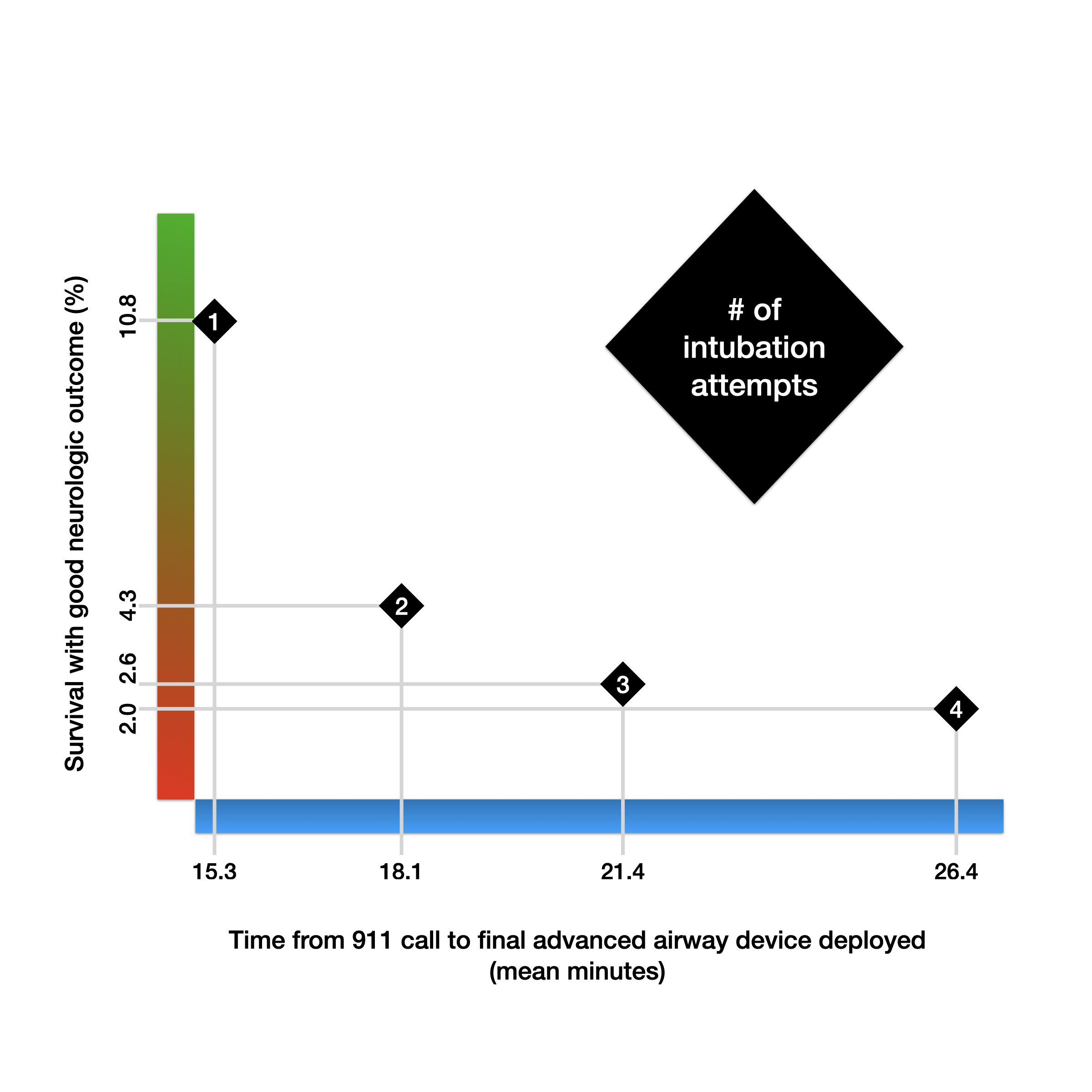Article Summary by Casey Patrick, @cpatrick_89
Who, What, When, Where and How?
Who? – 1205 non-trauma OHCA patients with a endotracheal intubation attempt, defined as “the introduction of a laryngoscope past the teeth and concluded when the laryngoscope was removed from the mouth, regardless of whether or not an endotracheal tube was inserted.”
What? – Retrospective, observational, cohort (cohort = OHCA/intubation)
When? – Jan 2015 – June 2019
Where? – Seattle Fire
How? – Primary outcome = neuro intact survival (CPC1/2)
Excluded No attempt, BLS only, intubated after ROSC, DNR, other services
The Results
Age = 60’s/68% male/33% witnessed/61% received bystander CPR/ 21% shockable rhythm
ROSC 44%/Hospital admission 38%/Survival to d/c 11%
First attempt success 65%/2nd 86%
Overall rate of supraglottic use – 2.8%/0.7% after 2 attempts/11.2% after 3 attempts/28.4% after 4+ attempts
Primary outcome = CPC 1/2
There was a negative correlation between # of ET attempts and neurologically intact outcome: 11% CPC 1/2 with ONE intubation attempt/4% with TWO/3% with THREE and 2% with FOUR+ (see Figure)
These differences held for shockable vs. non-shockable rhythms
Multivariable stats modeling adjusted for: age/sex/witness/bystander/times/initial rhythm
The Questions
What about SGA’s? - This isn’t a rehash of PART/AIRWAYS-2. Overall rate of SGA use was very low.
Mean time to airway = 5min in this study
Yes, this is retrospective but… Very granular (especially in OHCA world)
Incorporated monitor data PLUS audio (1200 patients!!)
What Should We Do Now?
No, this doesn’t translate directly to agencies using “primary SGA” in OHCA
BUT…More evidence airway delays = worsened patient-oriented outcome
Should there be a more rapid transition to SGA use after failed primary intubation attempt?
BOTTOM LINE - Concentrate on the interventions that we KNOW matter: Early recognition and bystander CPR, access to early defibrillation, minimize pauses, proper compression rate and depth.
Edited & Accompanying Figure by EMS MEd Editor Maia Dorsett, MD PhD FAEMS (@maiadorsett)
